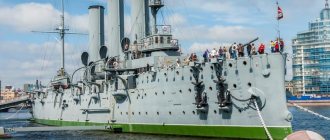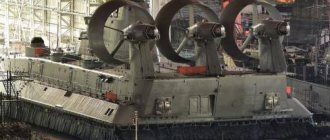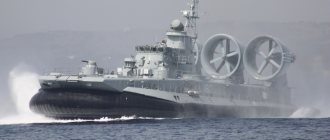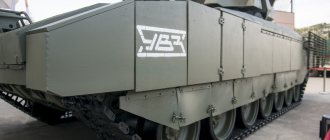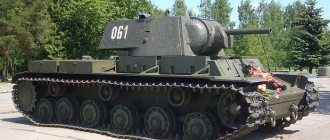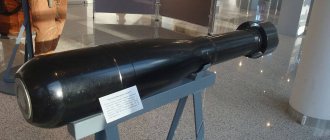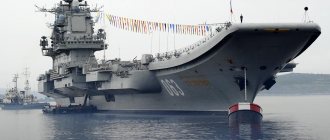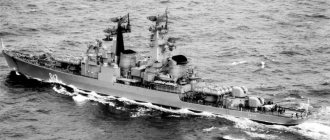Tank BT-2
BT-2 (High-speed Tank) is a light Soviet wheeled and tracked tank.
- Progenitor: American tank Walter Christie M.1931
- Further development: BT-5; BT-7; T-34
- Relatives: British cruiser tank Cruiser MK-3
In 1929, the Revolutionary Military Council of the USSR approved a document that for many years to come defined the concepts for the development of the armored forces of the Red Army - “The Tank-tractor Automotive Armor System of the Red Army.” In parallel with this, the “theory of a global offensive operation” was actively promoted as the main part of the military doctrine of the Soviet state, which implied a multiple increase in armored forces.
At the beginning of 1930, a commission under the leadership of the head of the department of motorization and mechanization of the Red Army, Innokenty Andreevich Khalepsky, went abroad to familiarize himself with samples of foreign equipment and the possibility of purchasing them with accompanying technological documentation for establishing mass production in the USSR.
Tank M.1931. Walter Christie on his tank.
In the summer of 1930, a meeting of the Soviet delegation with the American designer Walter Christie took place in the United States, at which Christie’s new development, the M.1931 tank, .
*Until the middle of the 20th century in the USSR, the modern USA was called the USA (United States of North America).
At first, the Soviet delegation was not interested in the unusual tank, since it went beyond the established concept of tank-tractor weapons of the Red Army. But soon information appeared that Christie was also negotiating with the Polish delegation. At that time, Poland was on the list of the worst enemies of the Soviet state, and it was absolutely impossible to allow a new vehicle to enter the Polish army.
An agreement was concluded between the parties for the supply of two Christie tanks to the Soviet Union. Christie also undertook to provide information on further modernization of the tank and hand over related technological documents. The transaction cost was $160,000
, of which $60,000 directly for both tanks and spare parts for them and $100,000 for technological documentation and production patents.
*For comparison, the average salary of a public school teacher in the United States was about $500 per year. And the FORD B (V8), released in 1933, could be bought for $480.
Tank M.1931 in the USSR
In December 1930, the tanks were sent to the USSR. The US State Department was informed about the transaction in advance and all necessary permits were obtained.
The American designer did not fully fulfill his part of the agreement. Tanks arrived in the USSR
, the accompanying technological documentation was also not complete. For this, Christie was kept $25,000.
*Soviet intelligence did an excellent job: the missing documentation was secretly acquired from employees of Christie's office.
After some time, Christie independently turned to the Soviet side with a proposal to purchase his new M.1932 tank , which had even more outstanding speed characteristics. In the summer of 1932, the car was transported to the USSR (this time in secret, since the US State Department banned the deal).
Tank Christie M.1932
Despite its truly outstanding performance in speed, the Flying Tank Christie M.1932 turned out to be too unreliable and did not go into mass production. The only copy, called BT-32, was shown in 1933 in Kharkov at a parade in honor of the October Revolution.
*M.1932 with a 750-horsepower engine could reach speeds of up to 190 km/h
Drawing of the BT-2 tank
On November 21, 1930, the Christie M.1931 tank was accepted by the Revolutionary Military Council of the USSR for serial production . Two prototypes arrived in the USSR only in the spring of 1931, i.e. the decision on serial production was made BEFORE the actual receipt of American tanks.
The process of mastering production at the industrial facilities of the Soviet Union began. On May 21, 1931, a new vehicle with the index BT-2 (High-speed Tank) began to be assembled at the Kharkov Locomotive Plant. A uniform turret was produced at the Izhora and Mariupol plants. In internal factory documentation, two experimental M.1931 tanks were referred to as “Original I” and “Original II”. According to some reports, they were also assigned the index BT-1 .
In Kharkov, on November 7, 1931, at a parade in honor of the anniversary of the October Revolution, the first 3 BT-2 tanks were shown to a wide audience . The story turned out to be not very beautiful, because... one tank simply did not reach the parade site (the engine caught fire), while the other two had difficulty leaving the city streets due to problems with the gearbox.
The first production BT-2 tanks entered the Red Army in 1932 . Low build quality, a shortage of spare parts, an unreliable engine and, as a result, a contradictory reaction among the troops, but on the whole the vehicle was accepted. First of all, thanks to its excellent dynamic characteristics.
During the 1935 exercises, one of the BT-2 tanks made a jump of 40 meters. This delighted all observers. How the tankers felt after such a jump is not specified.
Engine BT-2
The BT-2 was equipped with aircraft engines that had expired and had undergone major repairs - the American V-shaped 12-cylinder four-stroke L-12 "Liberty" or its domestic analogue M-5-400 .
Power: 1650 rpm, 400 hp. *M-5 was discontinued from mass production back in 1930, and therefore 2 thousand used Liberty were purchased in the USA.
Ideas about installing another M-17 aircraft engine, which is in mass production, on a tank did not find support, because the aforementioned M-17s were not even enough for aviation needs.
In 1933, testing began on a vehicle with an experimental diesel engine BD-2 (High-speed Diesel)
~360 l.
With. The diesel engine reduced the likelihood of fire, increased range and overall reliability. The prototype of the tank received the designation BDT-1 .
Only in 1939, a heavily modified BD-2 with a new designation B-2
(500 hp, at 1800 rpm) went into mass production. Installed on BT-7M tanks.
*The ratio of horsepower per ton of weight for the BT-2 was 35.4. For comparison, for the modern T-90A this figure is 21.5 hp/t, and for the American Abrams M1A2 - 24.1 hp/t.
Machine evaluation
The BT-2 was, of course, a landmark tank for Soviet industry. It is enough to compare it with the previous Soviet T-18 tank. On the BT-2, for the first time, a powerful engine was introduced into the design of a production tank (in terms of power density, the BT-2 probably remains unsurpassed to this day; for comparison, the T-80U has 27 hp/t), a wheel-tracked drive, candle pendant, gun with powerful ballistics. Its mass production became a great success for the young Soviet industry.
At the time of production, the BT-2 was one of the best tanks in the world. It had outstanding speed for those times and powerful weapons (in the cannon-machine gun version). BT-2 continued to remain quite “at the level” until the end of the 1930s. At the same time, BT-2 had a number of disadvantages:
- weak (mostly machine gun) armament of most tanks;
- low reliability;
- insufficient crew numbers;
- inconvenient view from the tank;
- lack of a radio station;
- poor location of the machine gun (on the side of the turret);
- poor habitability.
Most of the shortcomings were related to the incompleteness of the project and problems in organizing mass production. To a large extent, they were eliminated in the next modification - BT-5.
By 1941, the BT-2 was clearly outdated, especially the machine gun modifications. Its armor protected only from small arms bullets and was penetrated at close range by the 7.92 mm anti-tank rifles and 37 mm anti-tank guns available in large quantities in the Wehrmacht. Also, the BT-2 was easily hit by any German tank, except the machine-gun PzKpfw I. Accordingly, it could be used mainly for reconnaissance, patrolling and other auxiliary purposes. Good dynamic capabilities (adjusted for severe wear and tear) made it possible to use this tank as part of large tank formations. Alas, the situation in the first year of the war was not conducive to dashing tank raids by Soviet troops behind enemy lines, in which the BT-2 could have come in very handy. The use of this tank to support infantry inevitably led to heavy losses. The BT-2 gun allowed it to fight German light tanks PzKpfw I, PzKpfw II, PzKpfw 35(t), PzKpfw 38(t) (with the latter - when firing at the side, and even then, early modifications). It was difficult to hit medium tanks PzKpfw III and PzKpfw IV; the chance appeared only when shooting at the side from close distances at an angle close to the normal.
It is interesting to compare the BT-2 with German tanks at the beginning of the war. Machine gun modifications of the BT-2 are close in capabilities to the PzKpfw I, inferior to it in observation devices, but superior to it in speed. The cannon-machine-gun modification is closer to the PzKpfw II, compared to which the BT-2 is less armored (except for early modifications of German tanks), weaker in terms of observation and communication devices, has a slightly larger size, but has a more powerful gun and greater speed. Comparison with the PzKpfw 35(t) is no longer in favor of the Soviet tank. 35(t) is slightly better armored, has more machine guns (and more conveniently located) and about the same cannon, but has a significant advantage in observation and communication devices. The 35(t) was also smaller in size and had better maneuverability. The Soviet tank wins only in speed. Comparing the PzKpfw 38(t) or PzKpfw III, especially later modifications, no longer leaves the Soviet tank any chance, mainly due to the better armor of the Germans and the presence of a larger crew.
Of course, in 1941 the BT-2 had rather modest characteristics. But we should never forget that the line of Soviet BT tanks began with this not very reliable, weakly armored and armed tank, whose development ultimately led to the creation of the famous T-34.
Chassis BT-2
Chassis BT-2
- The driving wheels are rear, with a diameter of 640 mm.
- Track rollers - 4 on each side, with a diameter of 815 mm.
- Two sloth roller guides used to tension the track chain.
- The road wheels and sloth rollers were rubberized.
The BT-2 tank had two types of propulsion - tracked and wheeled. To switch from tracked to wheeled, it was necessary to remove the track chains, secure them to the fenders and install locking rings on the hubs of the rear road wheels (4th pair). Rotation was transmitted through a gearbox (guitar) from the driving rear wheels. To control the tracked vehicle, levers were used; for the wheeled vehicle, a steering wheel was used.
Each track chain consisted of 46 tracks (23 flat tracks and 23 ridge tracks). Track width - 260mm.
Jump BT-2
The process of switching from tracked to wheeled took just over half an hour.
The maximum speed on tracks was 52 km/h, on wheels – 72 km/h. The optimal speed for the BT-2 was 25-30 km/h on both tracked and wheeled vehicles. This pace allowed us to save low-quality tracks and tires for as long as possible.
Christie tank being tested in Kubinka The first copy of the BT-2 entered testing in the winter of 1933. |
Since the early 1930s, Soviet military doctrine was based on the theory of Deep Operation. This theory was developed in the late 20s. Its author was Vladimir Kiriakovich Triandafillov, who in 1926–1931 was the head of the Operations Directorate of the Red Army Headquarters. Triandafillov’s works “ The scope of operations of modern armies ”, M., 1926 and “The nature of operations of modern armies” M., 1929 became the theoretical basis for the pre-war construction of not only and not so much the Soviet as the German armed forces. There, this theory was a logical addition to the German theory of the Lightning War.
Pre-war military manuals were created under the theory of the Deep Operation, such as, for example, the Temporary Field Manual of 1936, as well as the PU-39 field manual. Tank and airborne troops were created under this theory.
However, the tanks of the late 20s did not fit the theory of deep operations in any way - their speed was too low and their range was very limited. To implement the theory of the Deep Operation, a completely different tank was required, and in 1932 such a tank entered service with the Red Army.
This tank was based on the design of the American designer Walter Christie, which he himself called the “tank of 1940” in 1928. Christie found a technical solution that made it possible to increase the operational mobility of tanks - in other words, the speed when driving on roads. He increased the diameter of the road wheels, the front two of which were steerable, to the size of car wheels, and made the track removable. When driving with the tracks removed, the traction force was transmitted using a Hall chain from the drive wheel to the rear pair of rollers, which served as the drive wheels.
Tank Christie
The vehicles of this American engineer, built in 1931, were tested by the US Army, but were never accepted into service. Experts believed that at high speeds it was very difficult to control them, and the armor of the tanks was insufficient.
But this tank was destined to find a second home. The Soviet trade mission bought these machines from the designer and took them to the USSR under the guise of tractors. There, this model, under the designation BT-2, was put into service in absentia on May 23, 1931, when not a single copy had yet been manufactured.
By order of the Supreme Economic Council of the USSR No. 73 of May 21, 1931, to ensure the organization of the production of BT tanks at KhPZ, a design bureau was created, which included 11 engineers and 4 draftsmen from the State Design Bureau ORPO (Gun and Machine Gun Association), two representatives from the Izhora plant, 15 engineers from NATI (Scientific Automotive and Tractor Institute), two from the UMM RKKA, from KhPZ - the full tank design bureau. The leadership of the newly created bureau was entrusted to the head of the State Design Bureau of ORPO S.A. Ginzburg, and the chairman of the tank section of the Technical Committee of the UMM of the Red Army N.M. Toskin was appointed his deputy. On May 25, the KhPZ Design Bureau began work on the drawings and specifications of the BT tank. All documentation had to be ready within a month and a half - by July 15. By July 26, work on the drawings and technological documentation was largely completed. The circle of related factories has also been determined. KhPZ was appointed as the manufacturer of hulls, track tracks, forgings, steel and non-ferrous castings. The supplier of armor for hulls and turrets and seamless steel pipes is the Izhora plant. Suspension springs had to come from or from the S.M. Budyonny plant, radiators - from the radiator plant in Moscow.
The body of the BT-2 was a box assembled from armor plates connected by riveting. The front part of the hull had the shape of a truncated pyramid. For entry into the tank, there was a front door that opened towards itself. Above it, in the front wall of the driver's booth, there was a shield with a viewing slot that folded up. The nose section consisted of a steel casting to which the front armor plates and bottom were riveted and welded. In addition, it served as a housing for mounting the rack and steering arms. A steel pipe was threaded through the casting, externally welded to the armor plates and intended for attaching sloth cranks. Consoles (in the form of triangular armor sheets) were welded (or riveted) to the nose of the BT-2 The consoles had platforms for attaching rubber buffers that limited the travel of the shock absorbers of the front steered wheels.
The side walls of the case are double. The inner sheets of the walls were made of simple non-armored steel and had three holes for the passage of seamless steel pipes for mounting the axle shafts of the road wheels. On the outer side, five struts are riveted to the sheets for attaching cylindrical spiral springs of the suspension. Between the 3rd and 4th struts there was a gas tank on wooden supports. The final drive housings were riveted to the rear lower part of the inner body sheets, and struts for attaching the rear spring were riveted to the upper part. The outer sheets of the walls are armored. They were bolted to the spring brackets. Wings were installed outside on both sides on four brackets. The rear of the hull consisted of two final drive housings, slipped and welded onto a steel pipe and riveted to the inner side sheets; two sheets - vertical and inclined, welded to the pipe and crankcases (two towing brackets are riveted to the vertical sheet), and a removable rear shield that covered the transmission compartment at the rear. There were holes in the vertical wall of the shield for the passage of exhaust pipes. A muffler was attached to the outer side of the shield. The bottom of the body is solid, made of one sheet. Under the oil pump there was a hatch for dismantling the engine and two plugs for draining water and oil.
Control department of the BT-2 tank:
1 — panel with control instruments, 2 — control levers for onboard clutches, 3 — steering wheel (in the folded position), 4 — main clutch pedal, 5 — brake pedal, 6 — accelerator pedal, 7 — rocker gear shift mechanism, 8 — front springs wheels, 9 — brackets for installing the driver’s seat.
The roof at the front of the BT-2 had a large round hole for the turret with a riveted lower ball bearing strap. Above the engine compartment in the middle, the roof was removable, with a sheet that folded upward and was locked with a latch from the inside; The latch was opened from the outside with a key. In the middle of the sheet there was a hole for the air supply pipe to the carburetors to exit. On the sides of the removable sheet, radiator shields were attached to the racks, under which air was sucked in to cool the radiators. Above the transmission compartment there was a square hatch for the exit of hot air, closed with blinds. Longitudinal armor plates above the space between the side walls were attached to the spring brackets with studs. Each sheet had three round holes (the outer ones for the passage of the spring regulating cups, and the middle one above the filler neck of the gas tank); another hole with a through slot was located above the gas line plug, and three brackets for the belts for fastening the track on the folded wing were also installed here.
The tank had two types of propulsion: tracked and wheeled. The first consisted of two track chains, each with 46 tracks (23 flat and 23 ridged) 260 mm wide; two rear drive wheels with a diameter of 640 mm; eight support rollers with a diameter of 815 mm and two sloth guide rollers with tension devices. The track rollers were individually suspended on cylindrical coil springs located for... six rollers vertically, between the inner and outer walls of the hull, and for the two front ones - horizontally, inside the fighting compartment. The drive wheels and road wheels are rubber-coated.
to begin production of the first six BT-2s on June 15 with a view to completing them by November 1. But by the specified deadline, only three cars were produced, which were shown at the parade in Kharkov (and not in Moscow, as it was erroneously written before) on November 7, 1931. Moreover, all these tanks had hulls and turrets made of ordinary non-armored steel. With great difficulty, it was possible to build 3 prototypes, 2 of which took part in the parade on November 7, 1931 in Moscow (the third tank had a fire in the engine compartment). The leadership of the Red Army had doubts about the feasibility of producing the tank, but in the end it was decided to continue production. A total of 13 such hulls and 66 turrets were produced, since the plant was unable to immediately master their production from armor. Subsequently they were replaced with armored ones.
Serial production of the tank immediately encountered a lot of difficulties. At that time, the USSR was just beginning to develop heavy industry, and literally everything was missing to produce an advanced model of armored vehicles - trained personnel, machine tools, and high-quality materials. Problems arose with the production of high-quality armor and the formation of hulls and turrets from it. The tank was left without an engine - while it was being finalized, production of the M-5 aircraft engine for which it was designed was discontinued. They began to install engines on the tanks that had exhausted their service life in aviation, and they also had to urgently purchase from the United States the stocks of Liberty engines that were available there.
The twelve cylinders of this engine were arranged in a V-shape at an angle of 45 degrees. with a 1274 mm cylinder diameter and a 177.8 mm piston stroke, the working volume was 27.028 liters. At a 5.4-fold compression ratio and 1650 rpm, the engine produced 400 horsepower.
We purchased 2000 pieces, some of which were also used. But the new engines required repairs and were characterized by low reliability and fire hazard. Major problems arose with weapons. Initially, it was planned to install a 37 mm PS-2 , developed in 1930 by engineer Pavel Nikolaevich Syachentov. However, it was not possible to establish its mass production. The situation was saved by the adoption of the B-3 , created on the basis of the 1930 model 37-mm 1K anti-tank gun . Auxiliary weapons were represented by a machine gun . The gun's ammunition load was 92 rounds. The machine gun was supplied with 43 disks, the total number of cartridges in which was 2709 pieces. Since the production of tanks was ahead of the production of guns, some of the tanks went to the troops unarmed. At first it was planned to install the 37-mm Hotchkiss SA-18 the T-18 (MS-1) tanks , but there were not enough of them. In order to somehow rectify the situation, it was decided to install a pair of YES aircraft machine guns directly in the troops instead of a cannon.
Options for placing weapons on the BT-2 tank
Over time, all difficulties were overcome, and the production of BT-22 became widespread. BT-2 tanks were manufactured , in 1933 - another 224. In 1933, due to the start of production of the more advanced BT-5 the production of BT-2 was discontinued.
The BT-2 tanks that entered service with the troops quickly began to be viewed more as training tanks. The process of mastering them by personnel was difficult. The not particularly high build quality of the machines, coupled with the low qualifications of the maintenance personnel, resulted in constant breakdowns. Their elimination was made difficult by the eternal shortage of spare parts. Nevertheless, the dynamic capabilities of the tank were impressive; the tank’s jumps at distances of up to 40 meters, proudly demonstrated to high authorities and foreign guests, were especially famous. Initially, BT-2 entered service with mechanized corps, after their disbandment - with mechanized and tank brigades. Gradually, as the troops became saturated with more advanced tanks, they increasingly switched to performing training tasks, both in units and in educational institutions, which by the end of the 1930s had up to 130 BT-2 . BT-2 tanks that were by that time in service with the Red Army were decided to “be left as a training park until they are completely worn out.” However, the massive formation of mechanized corps forced these vehicles to be put back into service. BT-2s first went into battle in the conflict on the Khalkhin Gol River . Then they took part in the so-called Liberation Campaign in Western Ukraine and Belarus . A significant number of them took part in the Soviet-Finnish war. Thus, the 1st light tank brigade had 82 BT-2s , most of which during heavy fighting broke down for technical reasons and were evacuated to the plant. There were also combat losses - four tanks burned out and two sank. In general, the losses of the BT-2 in the conflicts and wars of 1939-1940 were small.
BT-2 with cannon and machine gun armament: 24th TD, 10th mechanized corps.
By June 1, 1941, the Red Army had 580 BT-2 , including 396 in the western districts. Of these, 366 were on the move and were used only as training vehicles, 119 BT-2 required medium and 30 major repairs, another 72 were purely training and were used mainly as training stands. BT-2 tanks used by the troops as training vehicles were put into service. BT-2s were part of tank and motorized divisions of mechanized corps and took part in battles along almost the entire front.
So, in the 5th mechanized corps there were 10 BT-2 , in the 6th mechanized corps - 30, in the 7th mechanized corps - 27, in the 8th mechanized corps - 14, in the 24th tank division of the 10th mechanized corps - 139. During the battles, these heavily worn-out vehicles were quickly lost, so , in the same 24 TD on July 24, 1941 there was no longer a single BT-2 . According to some reports, there was an acute shortage of 37 mm shells, since their production had long ceased. The BT-2s located in the inner districts were hastily put into combat readiness and thrown into the battles of the summer-autumn 1941, and the majority were also quickly lost. A certain number of BT-2s were used in the Battle of Moscow, for example, there were 5 BT-2s . Individual vehicles of this type were seen at the front in 1942-1943 (in particular, there is a photograph of a BT-2 in battle, dating back to the summer of 1942). A certain number of these vehicles were available on the Leningrad Front, for example, in the summer of 1943 there were 12 of them. According to some sources, they fought back in 1944.
Read about other domestic tanks there →
Performance characteristics of serial BT-2
- Crew: 2 people
- Combat weight: 11.3 tons.
- Dimensions:
Case length: 5350 mm - Case width: 2230 mm
- Height: 2160 mm
- Ground clearance: 350 mm
- Forehead: 13mm.
- L-12 "Liberty" or M-5-400
- Tracked or wheeled
- On caterpillar tracks - 52 km/h.
- On wheels: ~200 km.
- Elevation angle: 42
BT-2 weapon options
BT-2 tank with B-3 cannon and machine gun in a separate installation
BT-2 with machine gun armament
- 37-mm B-3 tank gun (factory index 5-K). The BT-2 was planned to be equipped with a 37-mm cannon in a coaxial mount with a DT machine gun, but due to difficulties encountered in production, the first 60 copies were produced without machine gun armament.
- 37-mm B-3 tank gun and DT machine gun in separate installations. Because Technically, it was not possible to place the cannon and machine gun in a coaxial mount; the turret design was changed, and the machine gun was placed in a separate ball mount to the right of the main gun.
- 7.62 mm coaxial machine guns DA-2.
- 7.62 mm coaxial DA-2 machine guns in one installation and a single DT in the other.
*More BT-2 tanks with machine gun armament were produced than with cannon armament.
BT-5 on parade in Minsk. 1936
Experimental sample
: 45-mm 20-K cannon and DT machine gun in one installation.
A more powerful weapon required an increase in the volume of the turret. All attempts to rework the standard turret (cylindrical, riveted, with a bevel at the top at the front) were unsuccessful. Subsequently, by replacing the turret with another one (of larger volume, with a rear niche), successful tests were carried out. In 1933, a vehicle with a 45-mm cannon went into mass production, but with the designation BT-5.
to install a 76-mm cannon on the BT-2 did not stop .
Of the many options, only a few ideas found their way into single experimental machines. None of them subsequently entered mass production.
Tank D-38
In the most unusual version, it was proposed to install not only a 76-mm cannon and a DT machine gun in the turret, but also a 37-mm cannon and a DT machine gun in the hull. The crew increased to 3 people, the weight of the tank increased to 14 tons, the thickness of the armor in the main projections increased to 20 mm. The tank was named D-38 . All documentation was prepared and even a life-size model was built. However, a commission from the Department of Motorization and Mechanization of the Red Army found the project unsatisfactory.
Further work on the tank with the D-38 index led to the abandonment of the 37-mm cannon in the hull. The new, enlarged turret housed a 76-mm regimental gun with a shortened recoil length and a DT machine gun in a separate installation. The only working prototype was built.
BT-203
they tried to equip the BT-2 with a 203-mm recoilless gun seems completely incredible . According to some sources, the project was abandoned at the documentation development stage. experimental tank with the index BT-203 was built , which was rejected after field tests.
There is very little information on the BT-203 project. The only mention in printed literature is found in the book by Vyacheslav Olegovich Shpakovsky “Tanks. Unique and paradoxical."
- 37 mm gun B-3 (5-K)
Caliber: 35 mm. - Barrel length: 45 calibers
- Initial speed: 700 m/s.
- Vertical pointing angles: −8 to +25 degrees
- Sight: telescopic
- Rate of fire: up to 12 rounds/min.
- Longest firing range: 2000 m.
- Guidance drives: manual
- Weight: 8.3 kg.
- Weight without magazine: 7.1 kg.
Armament options for the BT-2
The gun's ammunition capacity was 92 rounds, the machine gun's ammunition load did not change depending on the armament option, and was always 2,709 rounds
*The DT and DA machine guns were developed on the basis of the DP (Degtyarev Infantry) machine gun. What distinguished the DT from the DP was: a retractable metal stock, a diopter sight, and an enlarged magazine. The YES differed from the DP: the absence of a protective casing, an enlarged magazine, the butt was replaced with two handles (upper and lower). DA-2 was two connected DAs. It had a parallel descent, the upper handles were replaced with a common shoulder rest and cheek rest, and a muzzle brake was installed on the barrels.
Production
Serial production of the tank immediately encountered a lot of difficulties. At that time, the USSR was just beginning to develop heavy industry, and literally everything was missing to produce an advanced model of armored vehicles - trained personnel, machine tools, and high-quality materials. Problems arose with the production of high-quality armor and the formation of hulls and turrets from it. The tank was left without an engine - production of the M-5 was discontinued. Engines that had exhausted their service life in aviation began to be installed on tanks, and they also had to urgently purchase from the United States the stocks of this obsolete engine (Liberty) available there. We purchased 2000 pieces, some of which were also used. But the new engines required repairs and were characterized by low reliability and fire hazard.
Major problems arose with weapons. Initially, it was planned to install a 37-mm PS-2 cannon on the tank, but it was not possible to establish its mass production. The situation was saved by the adoption of the B-3 cannon, which was an overlay of the barrel and breech of the 1K anti-tank gun (purchased German gun) on the stock with recoil devices of the PS-2 cannon. However, problems arose with the production of the B-3; this gun was produced at the plant named after. Kalinin with great difficulty using a semi-handicraft method. In addition, it was never possible to test the coaxial installation of a cannon and a machine gun. This led to the need to redesign the turret to accommodate a machine gun ball mount on the side. However, the first 60 turrets were released without such an installation, and, accordingly, the tanks were left without machine gun armament. Since the production of tanks was ahead of the production of guns, some of the tanks went to the troops unarmed. At first it was planned to install a 37-mm Hotchkiss gun on the tanks, but they were not available in sufficient quantities. In order to somehow rectify the situation, it was decided to install a pair of DT or DA machine guns directly in the troops instead of a cannon. This was seen as a temporary measure, with plans to replace them with a 45mm gun in the future, but this was never done. As a result, most of the BT-2 were armed only with machine guns.
Gradually the production problems were resolved. In 1932, 396 tanks were produced, and in 1933, another 224. In connection with the start of production of the BT-5 tank (essentially a BT with a new turret with a 45-mm cannon), production of the BT (renamed BT-2) was discontinued.
Differences between the Christie M.1931 tank and the BT-2
Top M.1931, bottom BT-2
- The chain drive connecting the caterpillar drive wheel to the rear road wheel (acting as a drive wheel during wheel drive) was replaced with a box drive (the so-called “Guitar”), which increased reliability.
- Newly designed tower.
- The nose of the tank took the shape of a truncated pyramid (instead of the pointed pyramid of the M.1931). Tow hooks appeared.
- The driver's access hatch has been changed.
- Since 1933, lightweight stamped rollers began to be installed on the BT-2.
The main disadvantages of BT-2, identified in the field
- Engine unreliability and high fire hazard.
- Poor factory assembly.
- The low quality of steel used to make the tracks led to their regular destruction. At the same time, spare tracks were extremely scarce. Thus, in the first half of 1933, 80 (eighty) spare tracks for BT track chains were produced in the USSR.
- Poor quality rubber led to cases of early destruction of tires on road wheels.
- Poor vehicle habitability. Added to the general cramped conditions were unbearable heat in summer and cold in winter.
Combat use of BT-2
The BT-2 received its baptism of fire during the liberation campaign against Western Belarus and Western Ukraine.
(September 17-29, 1939).
- 44th tank regiment 3rd cavalry division - 34 BT-2 tanks - no losses.
- 32 tank regiment 5 cavalry division - 35 BT-2 and BT-5 tanks - no losses.
- 42 tank regiment 4 cavalry corps - 41 BT-2 tanks - losses: 3 tanks.
The BT-2 was then used in the “Winter War” with Finland
(November 30, 1939 - March 12, 1940).
*Reliable facts that it was BT-2 that took part in the conflict on the Khalkhin Gol River (May 11 - September 16, 1939) could not be found. Most documents talk about BT-5 and BT-7.
By mid-1940, all the BT-2s remaining in the Red Army (546 units) were transferred to the training parks of military units, where they were supposed to serve out their remaining service life and retire. After almost a decade of military service, the vehicle with bulletproof armor and a 37-mm cannon became outdated and could not compete on an equal basis with modern Western European tanks such as the German Pz.KPFW III.
With the beginning of the Great Patriotic War, veteran tanks again took part in battles. Most of the BT-2 were lost in the first months of the war, however, a few copies managed to “survive” until mid-1942. So on April 1, 1942, the 106th separate tank battalion of the 23rd Army had 11 combat-ready BT-2s and 4 tanks under repair; on June 1, 1942, the 3rd separate reconnaissance battalion of the 42nd Army had 15 BT-2 tanks; on September 1, 1942, as part of the 86th separate tank battalion of the 55th Army - 10 BT-2. By the summer of 1943, 12 BT-2s remained in parts of the Leningrad Front.
Unfortunately, to date, of the 620 BT-2s produced, not a single completely authentic copy has survived.
Modifications and prototypes
It is not possible to indicate exactly how many tanks of each modification were produced, since the data varies greatly among different authors. It is absolutely certain that there were significantly more machine-gun tanks than cannon tanks.
- M1940. Purchased Christie tanks (2 pieces), used as prototypes. Fate is unclear.
- BT-2 cannon and machine gun. Armament: 37 mm B-3 cannon and 1 DT machine gun. Serial modification.
- BT-2 cannon. Armament: 37 mm B-3 cannon.
- BT-2 machine gun. Armament - 1 DT machine gun in a ball mount and 2 coaxial DT machine guns (also possible YES). Serial modification.
- BT-2 machine gun without a ball mount. Armament - 2 coaxial machine guns YES. Serial modification.
- BT-2 chemical. Flamethrower (chemical) tank. On June 1, 1941, there were 14 such tanks, all in the internal districts. There is no information about the fate.
- BT-2 sapper. Bridgelayer. On January 1, 1940, there was one such tank in the Leningrad Military District. Fate is unclear. However, after the “Winter War”, another copy was released but based on the BT-5.
- BT-2-IS (BT-IS). It was a BT-2 with three drive wheels, and, accordingly, had increased cross-country ability on wheels. Created in 1935 by a group led by N. Tsyganov. It was made in a single copy. The tests were successful. Fate is unclear.
- BT-2 with a 76 mm cannon. An experimental prototype was built, but apparently not tested. Fate unknown.
- BT-2 with a 203 mm cannon. Experimental sample. Released in 1934. The tank was equipped with 203 mm. Kurchevsky's gun. After testing, it was removed from them due to the fact that the tank bounced strongly.
Myths and misconceptions about BT-2
Above is a photomontage of BT-4, below is the original photo of BT-2
- In some sources you can find information that the prototype for the BT-2 was the Christie M.1940 model. This is not entirely correct. Walter Christie had high hopes for the M.1928 tank model developed in 1928. He called the prototype “Tank of the Decade” and gave it the corresponding loud unofficial name “Model 1940”. However, the prototype of the “Tank of the Decade” was heavily criticized by the US military and did not go into mass production. By 1931 Christie had upgraded the M.1928 "Model 1940". The modernized model received the index M.1931. It was on the basis of the M.1931 that the BT-2 began to be assembled. The Christie tank, officially named M.1940, was released only in 1937.
- Two M.1931 Christie entered the Soviet Union legally, with the permission of the US State Department, and not under the guise of tractors in an atmosphere of secrecy.
- The BT-2 never had two turrets installed. The material often found on the Internet about the BT-4, a vehicle based on the BT-2 with two turrets, is nothing more than fiction . At KhPZ there were actually plans to produce a vehicle with the BT-4 index, but its only difference from the BT-2 was a riveted-welded hull (the BT-2 had a riveted hull), simplified fenders and a modified towing hook. Photos of the double-turret BT are of high quality, but they are edited.
- The crew of the serial BT-2 consisted of only two people. There was never a third crew member in the BT-2.
- A radio station has never been installed on the BT-2.
The history of the creation of a light tank.
This combat vehicle is designed on the basis of the M.1931 wheeled-tracked tank, created by the talented American designer W. Christie. To determine the degree of labor intensity of the future BT-2, N. Toskin, a member of the NTK, went to New York. And soon a notification came to the name of I. Khalepkiy about the readiness of the inventor Christie to visit the USSR. The notification was accompanied by 127 sheets of drawings of the new tank. Under the terms of the contract, Christie was obliged to provide two tanks to representatives of the interested party, which were AMTORG, in the early autumn of 1930. But he delayed the production of tanks, so the first tank was shipped to the USSR only at the end of September 1930. The tanks arrived just after the English Vickers was shown to the military and in early March 1931, the first Christie tank was shipped to the ABTU warehouse.
The Soviet government decided to license the construction of the tank before it arrived in the Soviet Union. The index of the new vehicle, which, according to the continuous numbering system, should be either T-28 or T-29. But since the tank did not meet all the requirements of the existing tank weapons system, it did not receive an army index, and it seemed most reasonable to assign it the index “BT” - an abbreviation for “high-speed tank”. At the shows of the top of the Red Army, held on March 14, 1931, the combat vehicle was generally liked, although the impression it made was incomparable with the reviews of the tank purchased in England.
It may seem strange in our time, but the haste with which the BT-2 tank was put into production was explained by the fear that this tank would be built in Poland. Initially, the automobile plant in Yaroslavl (YAZ) was considered as the location of the main production. Its leadership spoke convincingly about the possibility of quickly mastering the production of the future BT-2 tank, provided that the plant was provided with personnel and technical assistance.
After some time, it became obvious that the Yaroslavl Automobile Plant, not alone, not with the help of AMO, would not be able to produce an overseas new product. At a meeting held in April 1932. On , in the presence of Voroshilov, Tukhachevsky and Khalepsky, it was decided to build 100 BT-2 tanks at the plant’s production facilities this year. Fulfillment of the order was ensured by the cessation of production of the T-18, as well as additional supplies of cemented armor.
Due to the fact that the production plan for the T-26 light tank was constantly being disrupted, and KhPZ named after. Comintern, due to the cessation of production of T-24 tanks, it was not used, the order for BT-2 was transferred to Kharkov. Which was quite reasonable, since the plant’s tool and machine park could almost completely produce BT, subject to cooperation on the engine, weapons and casting. By May 17, the production plan for BT-2 at the Kharkov plant was ready. The plan provided for the production of the first batch of 100 light tanks by the beginning of 1932. The final decision on the fate of the BT-2 was made on May 23, 1931, when the Defense Committee decided to adopt the BT light tank as a “fast fighter tank.”
